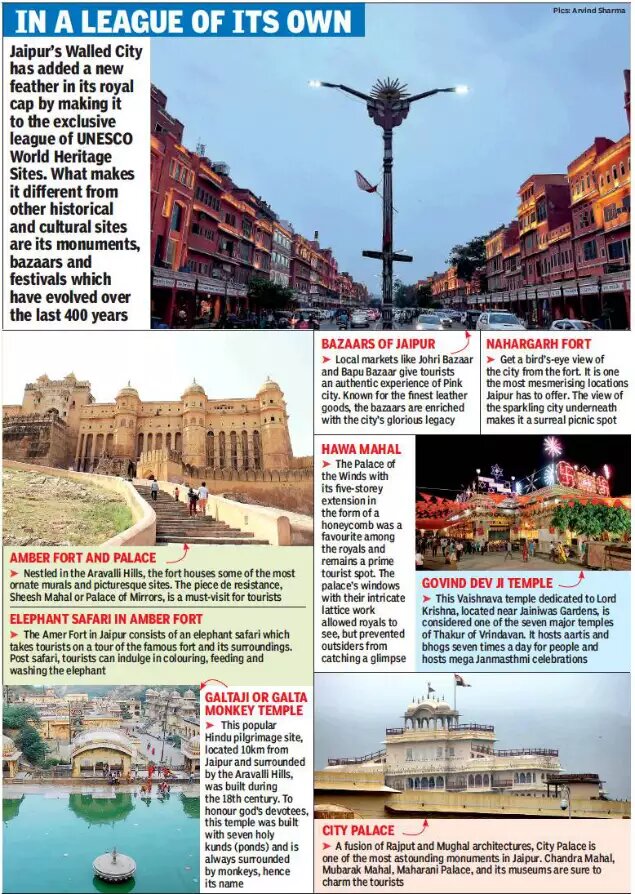Indian Heritage & Culture
Jaipur: A World Heritage Site
- 08 Jul 2019
- 3 min read
The Pink city, Jaipur (Rajasthan), has been declared a UNESCO World Heritage Site.
- The decision was taken at the 43rd session of the UNESCO World Heritage Committee (WHC) taking place in the city of Baku, Azerbaijan, from 30th June - 10th July, 2019.
- The city was nominated for its value of being an exemplary development in town planning and architecture that demonstrates an amalgamation and important exchange of ideas in the late medieval period.
Important Points
- Jaipur has become the second city of the country after Ahmedabad to get the recognition.
- With Jaipur's inclusion as a cultural site, the number of heritage sites across India that are on the UNESCO World Heritage list, has grown to 38, including 30 cultural properties, 7 natural properties and 1 mixed site.
- The walled city of Jaipur in Rajasthan, was founded in 1727 AD under the patronage of Sawai Jai Singh II. It also serves as the capital city of the state of Rajasthan.
- Unlike other cities in the region located in hilly terrain, Jaipur was established on the plain and built according to a grid plan interpreted in the light of Vedic architecture.
- Its streets feature rows that intersect in the centre and create large public squares called chaupars.
- The city's urban planning shows an exchange of ideas from ancient Hindu and modern Mughal as well as Western cultures.
- Designed to be a commercial capital, the city has maintained its local commercial, artisanal and cooperative traditions to this day.
- The iconic monuments in the city include the Govind Dev temple, City Palace, Jantar Mantar, Hawa Mahal etc.
UNESCO World Heritage Committee (WHC)
- The World Heritage Committee is composed of representatives of 21 States Parties to the World Heritage Convention who meet annually.
- The Convention Concerning the Protection of the World Cultural and Natural Heritage is an international agreement that was adopted by the General Conference of UNESCO in 1972.
- It is based on the premise that certain places on Earth are of outstanding universal value and should therefore form part of the common heritage of humankind.
- It basically defines the kind of natural or cultural sites which can be considered for inscription on the World Heritage List.
- The Committee is in charge of implementing the Convention.
- To date, 1,092 sites in 167 countries have been inscribed on the World Heritage List.





